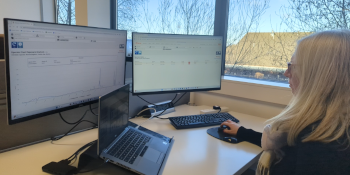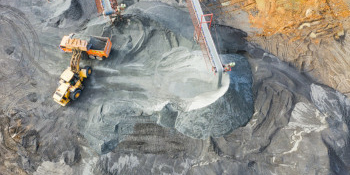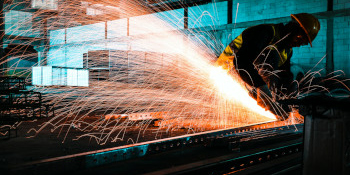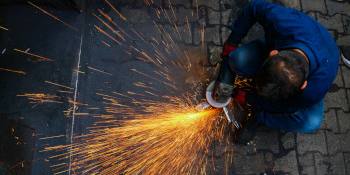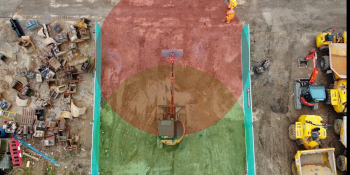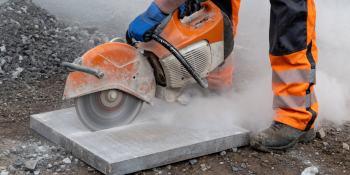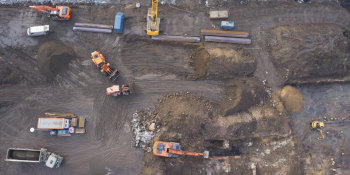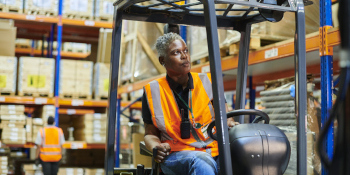The television. Music. People speaking.
This is the kind of noise to which most of us are exposed on a daily basis. For a lot of us, this noise is something that we take for granted. In fact, it’s often the case that we don’t consider things like music or the television to be ‘noise,’ at all; they’re simply a part of our environmental background - not something to which we pay very close attention. But if your hearing was damaged or impaired, and your ability to listen to your favourite song or participate easily in a conversation were made difficult, these everyday noises would no longer seem so secondary.
The reality is that noise from radio or a television isn’t generally of a volume or duration that can permanently damage our hearing. But when any sound occurs too loudly, or lasts for too long - no matter what it is - hearing loss can occur, and hearing loss - like many other conditions - is easily exacerbated or made worse by exposure to certain conditions often present in noisy workplace environments.
In many sectors, such as manufacturing, engineering, and construction, workers are exposed to noise that frequently surpasses ‘normal’ or ‘safe’ levels and durations, and to other conditions known to aggravate and accelerate hearing loss or damage. In the UK alone, it’s estimated that over one million workers are exposed to levels of noise that put their hearing at risk. Of those one million workers, nearly one-fifth have experienced hearing loss or conditions related to excessive exposure to noise.
Hidden Threats to Hearing Loss.
Workers within noisy environments are often exposed to on-the-job conditions or tasks that pose a constant threat to their hearing, including use of heavy machinery, power tools, and compressed air, to name only a few. It may seem obvious that exposure to tasks involving heavy machinery or industrial equipment would cause hearing damage or less if left unmitigated. But hearing damage can occur even where noise is not unreasonably loud, or unreasonably frequent. In fact, there are any number of factors seemingly unrelated to exposure to noise that can aggravate or accelerate hearing impairment, including mental and physical fatigue.
Even the way that workers in these environments are deployed can be a primary contributing factor to hearing damage or loss. For instance, shift-workers (‘night workers’) in the UK are more prone to hearing loss than non-shift workers.1 This increased likelihood for hearing impairment is due, in part, to the fact that noise-induced fatigue seems to occur more readily among workers who routinely perform shift-work, which tends to promote a higher likelihood of general fatigue, as well as insomnia, cardiovascular complications, and decreased cognitive performance. These conditions all aggravate noise-induced health problems, including hearing impairment.
“Having damage can occur even where noise is not unreasonably loud, or unreasonably frequent.”
Outside of fatigue induced by shift work, high mental and physical workload causes increased fatigue, and also results in decreased performance and cognitive impairment.2 Ironically, exposure to occupational noise (an all but unavoidable occupational reality for many workers) can increase mental workload, while an increased workload can simultaneously exacerbate the effects of noise on workers.3 This catch-22 of the noisy working environment is one that has resulted in such industry sectors suffering from fatigue at far higher rates than those outside of these sectors.
In fact, the unfortunate reality for many workers in the UK is that physical and mental workload is at an all-time-high. In fact, as of April 2021, construction was rated the number one ‘most burnt-out industry’ in the entire nation, followed closely by manufacturing.4 And while increased fatigue as a result of workload, stress, or working overnight might seem intuitive, the reality is that fatigue can - and is often - caused by far less obvious threats to a workers’ health.
When 1+1 Equals More Than Two.
The effects of vibration on hearing loss are well documented. Exposure to Hand Arm Vibration (HAV) is known to cause fatigue, and can also cause sleep disorders, depression, or difficulty concentrating.5 Taken alone, these factors would increase an individual’s risk of experiencing hearing loss, as hearing loss is directly influenced by fatigue and other physical conditions; but there exists an identifiably unique relationship between vibration and noise that is proven to increase this already dangerous risk.
“Stated plainly: when vibration and noise are experienced together, the negative effects of each are higher than they would be if the other were not present. It’s a bit like adding 1+1 and coming up with three.”
Where repeated exposure to vibration has resulted in irreversible damage (so-called “Vibration White Finger” or “VWF”), hearing loss at low and high frequencies is higher when compared to workers without VWF. 6 Moreover, in a specific study of noise work environments, it was unambiguously determined that HAV directly increased the risk of Noise Induced Hearing Loss (NIHL). 7 And when it comes to simultaneous exposure to vibration and noise, one study concluded that there exists a “synergistic adverse effect of co-exposure to noise and HAV on the cochlear function.”8 Stated plainly: when vibration and noise are experienced together, the negative effects of each are higher than they would be if the other were not present. It’s a bit like adding 1+1 and coming up with three.
An Individual Approach for Improved Protection.
Hearing loss, like damage caused by exposure to vibration, cannot be reversed. Personalised assessment, accompanied by appropriate refinement of risk reduction controls, is the best way to ensure that workers are adequately protected from exposure to noise.
The data is clear: exposure to noise affects different people in different ways. Whether a worker suffers hearing loss or impairment as a result of exposure to noise is heavily dependent on factors such as work schedule, mental and physical workload, and other health conditions. Thus, any approach that claims to sufficiently address an individual workers’ exposure to noise must be personalised, in order to be as relevant and as useful as possible.
It’s also clear that noise-induced hearing loss cannot be addressed in a vacuum. In order to prevent or mitigate hearing loss, a holistic approach that takes into account the totality of a worker’s environment should be considered. To the extent possible, data concerning a workers’ exposure to noise should be overlaid with data concerning their exposure to other potentially harmful or contributory factors, like vibration, and this data should be further informed by information about an individual’s workload and schedule.
“The noises we hear everyday - the television, music, people speaking - aren’t noises, at all. They’re our memories, our social activities, even our plans for the future.”
This level of insight isn’t available without real-time, personalised monitoring of an individual’s exposure to noise; a process that Reactec has worked to make affordable and uncomplicated, because access to the technology you need to best protect your workers shouldn’t be cost prohibitive, and it shouldn’t be difficult to use. Ultimately, the technology that we need to protect our workers from noise-induced hearing loss is simply far too important to be inaccessible.
The noises we hear everyday - the television, music, people speaking - aren’t noises, at all. They’re our memories, our social activities, even our plans for the future, and they’re a major part of how we interact with the world. They’re much more than just our ‘background,’ and that’s why it’s worth striving to bring their protection to the forefront.
---------------------------------------------------------------------------------------------------------------------
1 https://www.noiseandhealth.org/article.asp?issn=1463-1741;year=2019;volume=21;issue=101;spage=125;epage=141;aulast=Golmohammadi
2Benda NMM, Seeger JPH, Stevens GGCF et al. Effects of high-intensity interval training versus continuous training on physical fitness, cardiovascular function and quality of life in heart failure patients. PLoS ONE 2015;10:1-16.
3 Albery WB. The effect of sustained acceleration and noise on workload in human operators. Aviation Space and Environmental Medicine 1989;60:943-8; Zhang K, Wickens CD. Effects of noise and workload on performance with two object displays vs. a separated display. Dissertation Abstracts International 1990;51:1499-503; Smith-Jackson TL, Klein KW. Open-plan offices: task performance and mental workload. Journal of Environmental Psychology 2009;29:279-89.
4 https://www.pbctoday.co.uk/news/health-safety-news/construction-industry-burnout/91537/
5 Ljungberg JK, Neely G. Cognitive after-effects of vibration and noise exposure and the role of subjective noise sensitivity. Journal of Occupational Health 2007;49:111-6.
6 Turcot A, Girard SA, Courteau M, Baril J, Larocque R. Noise-induced hearing loss and combined noise and vibration exposure. Occupational Medicine 2015;65:238-44.
7 Pettersson H. Risk of hearing loss from combined exposure to hand-arm vibrations and noise; 2013
8 Sisto R, Botti T, Cerini L et al. Synergistic effects of noise and hand-arm vibration on distortion product otoacoustic emissions in healthy subjects. International Journal of Industrial Ergonomics 2016;62:48-54.

